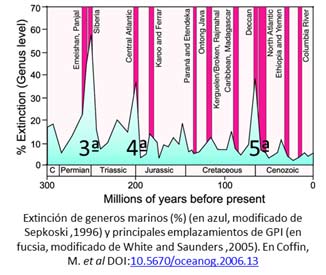24/06/2021
Published in
The Conversation
Esther Lasheras
Researcher of the Biodiversity and Environment Institute of the University of Navarra.
Beyond the obvious risk to the population posed by a volcanic eruption, the release of magma to the earth's surface has implications for biodiversity that go far beyond the geological risk itself. B Let us take a recent example; we all remember, 11 years ago, the eruption of an unpronounceable volcano in Iceland1, Eyjafjallajökull, which affected air traffic throughout Europe due to the training of clouds of ash and gases that spread over the continent. Well, apart from the economic losses in air traffic, tourism, commerce or local industry, the deposit of ash on land caused the contamination of aquifers (especially by fluorine) and a rapid proliferation of plankton in the ocean.
However, despite the tremendous effects it caused, the Eyjafjallajökull eruption can in fact be considered small in terms of magma Issue compared to the huge magma outflows that occur when so-called "large igneous provinces" (LIPs) are emplaced. These GPI are formed by the accumulation of igneous rocks from immense mantle plumes that emit an extraordinary amount of magma to the surface, generating vast extensions where basalts (very basic mantle magmas) are arranged forming large submarine plateaus, when emplaced in oceanic crust (Kerguellen, Seychelles) or large plateaus in continental crust, as in the case of the Deccan basalts (India), the Siberian "trapps" or the shelf basalts in the Columbia River (USA).
Given that none of our hominid ancestors have ever coexisted with the outflow of such a colossal amount of magma, we have no data about what would happen to humans in that status. However, it is easy to predict that it would be something catastrophic that would leave the current (and terrible) climate change we are suffering in an almost anecdotal detail. Like many disciplines in geology, we need only look to the past and see what happened to other species when the main manifestations of these large mantle plumes were emplaced. In this sense, their correlation with the five great extinctions that have occurred throughout the history of the planet is well known. The reason is quite evident: an eruption of these characteristics would produce changes of such magnitude in the atmosphere that it would not only darken it for years, but would even modify its composition. In addition to the harmful effects caused by the gases emitted (due to the direct toxicity of compounds such as SO2 or Hg), the ashes expelled in the eruption would produce a global cooling as a result of the decrease in incident radiation. To this we should add other effects such as the destruction of the ozone layer (as a consequence of the emission of halogenated compounds) or the acidification of the environment as result of the emission of sulfur compounds. All this would prevent the development of plant life and lead to a massive loss of species.
 The last great extinction (the 5th), which occurred 65 million years ago, coinciding with the famous Cretaceous-Tertiary boundary, led to the disappearance of 75% of the planet's species, including dinosaurs. The most accepted hypothesis at present establishes that this extinction was caused by a change in the climate produced by the impact of a large meteorite in the area of Mexico. However, coinciding with that moment was the emplacement of the Deccan basalts in India, which has led part of the academic community to postulate that it could have been the combined effect of both catastrophic events that caused the disappearance of the dinosaurs.
The last great extinction (the 5th), which occurred 65 million years ago, coinciding with the famous Cretaceous-Tertiary boundary, led to the disappearance of 75% of the planet's species, including dinosaurs. The most accepted hypothesis at present establishes that this extinction was caused by a change in the climate produced by the impact of a large meteorite in the area of Mexico. However, coinciding with that moment was the emplacement of the Deccan basalts in India, which has led part of the academic community to postulate that it could have been the combined effect of both catastrophic events that caused the disappearance of the dinosaurs.
1 Iceland is a zone in the Earth's crust where there is a continuous magma outflow due to the extraordinary coincidence of two igneous manifestations that take place in that area of the North Atlantic; on the one hand, the mid-oceanic ridge, which separates the tectonic plates of North America and Eurasia by about 2 cm/year, and on the other hand, the outflow of a large mantle plume in the Cenozoic.
